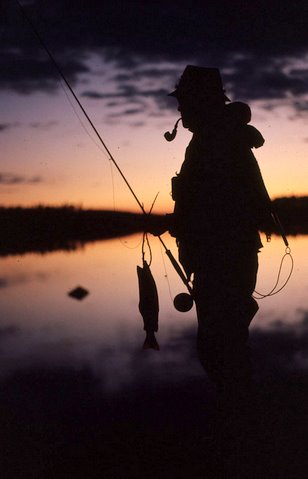|
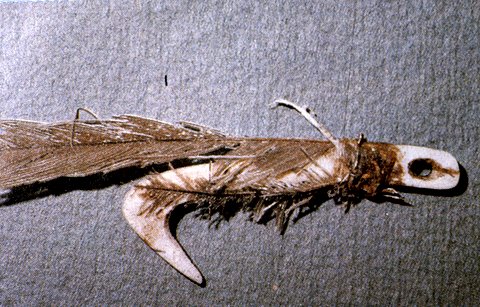
Åke Bodén,
known for ”Åbosländan” (a dry fly) inherited the fly in 1902-04 from his
father Levi Bodén, who in his turn got it from Lars Piitsa, a Laplander
who lived 30 km upstream Övre Soppero on Lainio river. This particular
fly, already known to the Piitsa family for at least three generations,
and created no later than 1790, was probably tied around the middle of
the 18th century. Hook, from reindeer antlers decorated with cormorant
feathers, “tying thread” of reindeer tendon, fastened with resin or wax.
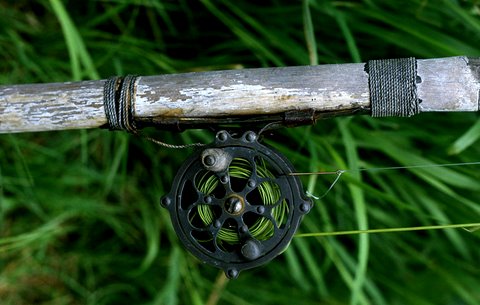
From the
19th Century, we have a more extensive documentation, and know that
during the Swedish agricultural era angling with some kind of fly was an
established method in parts of the country. The usual equipment was long
fishing pole with the line tied to the tip. The breakthrough for a more
modern form of fly-fishing came around 1814 when an English aristocrat
and sportsman, Richard Hutchinson, visited fishing spots in northern
Sweden. With him came British made flies - and the fly reel.
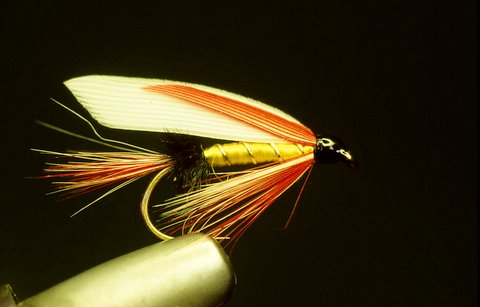
Still,
in the 1960’s when I became interested in fly-fishing, the British
influence was almost total. My favorite shop carried only flies of
British origin. Exotic patterns like Connemara Black, Hardy’s Favourite
and Silver Doctor crowded the shelves. After Hutchinson and far into
modern times British traditions dominated Swedish fly-fishing and
unfortunately gave it the reputation as an upper class sport.
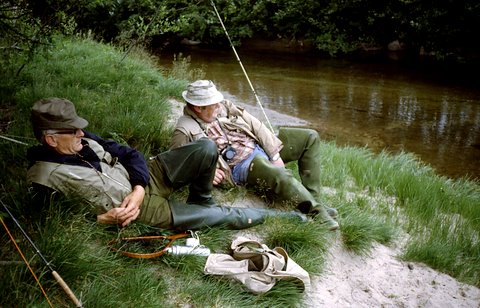
Much water
has passed under the bridge since the 1960’s, and today fly-fishing has
become an every man’s sport. Along with rising interest, information
about fly-fishing has expanded tremendously. The study of insects and
their imitations has become a passion for many fly-fishers. No doubt, it
was easier to select a fly in the sixties, when weather conditions and
the time of day often were regarded as more important than insect
activities.
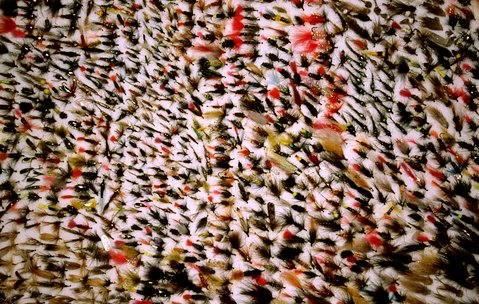
Nowadays,
most fishing and sports shops offer a confusing multitude of flies. In
addition, amateur tiers around our country produce thousands of flies.
The chance of creating a new fly pattern is practically non-existent.
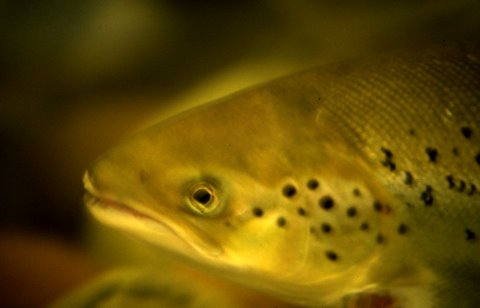
What do fish think about our flies? Probably they do not think at all. A
fish functions mainly through reflexes and genetic behavior, although it
seems to have a kind of “food memory”, which to a fly-fisher may appear
as the result of a logical thought.
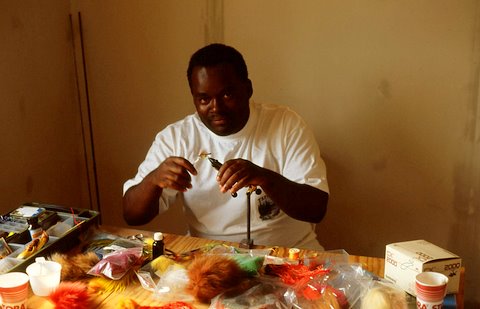
Roughly
speaking, there are two separate categories of flies. Imitations, which
are more or less exact replicas of the real thing, and lures, which
actually do not resemble anything edible, but still catch fish year
after year. Here my friend Jonas, a competent fly tier who, like most of
us, like most of us, does not care about conventions, but allows his
imagination to soar.
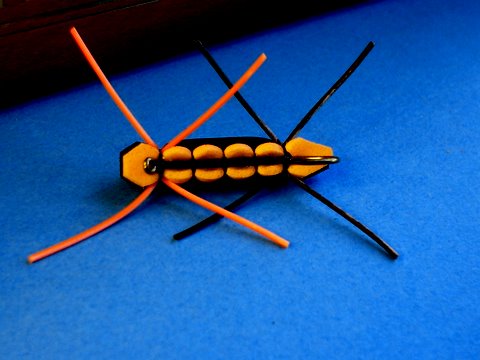
Counted
as a lure, this ”Tjernobyl Ant” is made of polycelon and has a number of
rubber legs that leave magical patterns on the water when retrieved in
short jerks. A mutant, although strange looking, has a strong attraction
to fish.
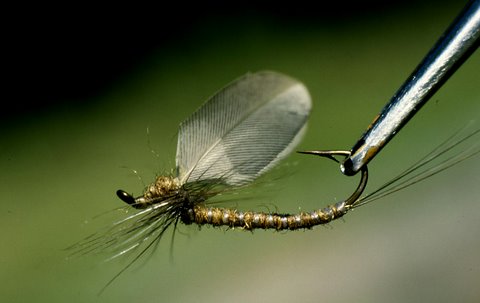
This is an
imitation beautifully tied by one of my talented friends. The hook
itself has a shape suggesting the curve of a mayfly’s body, giving the
wings a natural slant and the “legs” the right angle towards the
surface. Fortunately, you do not have to achieve an academic exam in
entomology in order to tie a fly that works - there are easier ways. See
below one of my favorite dry-fly patterns.
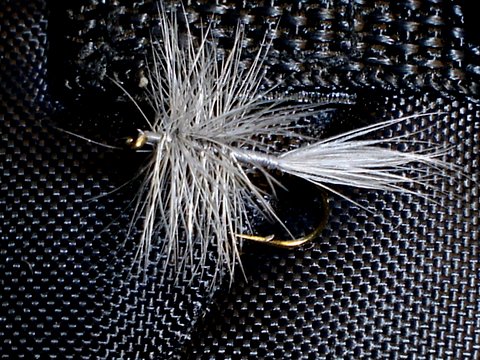
I call
it the minute-fly, since it seldom takes more than a minute to make. The
tying thread is grey, hackle and tail Blue Dun-colored, hook No. 12, 14
or 16. I tie in the hackle feather just behind the hook eye, wrap the
feather 3-4 sparse turns toward the hook bend, then 3-4 turns toward the
hook eye through the previous turns and then tie off. The fly floats
well and, although not an imitation, gives an illusion of a mayfly
riding high on the surface film.
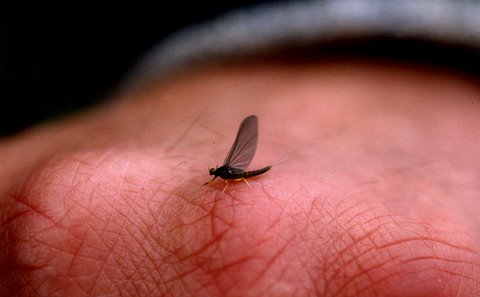
Insects
are not developed to suit the hunting and eating habits of fish. Rather,
they have, according to the laws of evolution, developed in such a way
to make them hard to catch. To succeed, logically we should try to make
our imitations more visible than a natural insect. Consequently, it is
understandable why fish during a heavy fall of ants often prefer our
clumsy imitation, even if there are hundreds of naturals on the water.
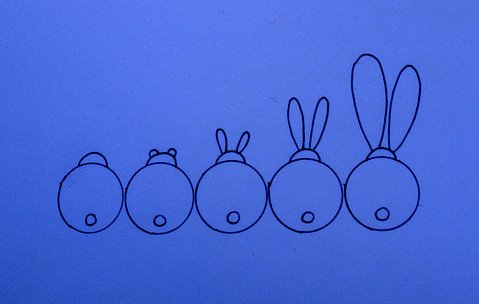
When
constructing a fly I have always believed in a slight exaggeration, here
illustrated by a gang of rabbits. The long ears are in drawings often
made extra long since they are so typical. In short, we make a more
distinct picture of the original. We immediately identify the drawing as
a rabbit, not because it is true, but because it accentuates a typical
characteristic. I imagine that a fish reacts in a similar way. Where a
perfect imitation is just one among many, the caricature gives an
immediate and positive impulse.
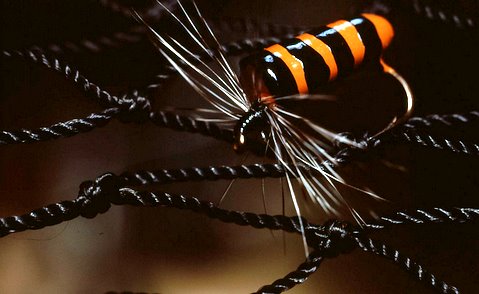
An
exaggeration may be that of a particularly profuse hackle, emphasizing a
special color, extra sheen to the fly body, or an overly marked
segmentation, as shown in this balsa fly. When it comes to streamers, a
protruding pair of eyes may give a tempting signal.
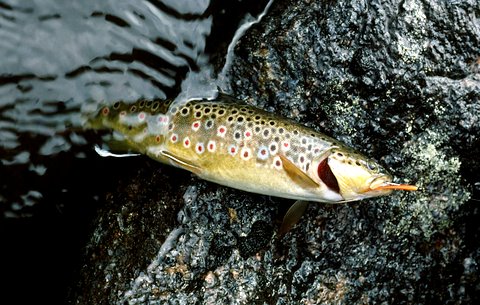
Articles
on fly-fishing often claim that a streamer is meant to copy a small fry.
Personally, I have never been altogether convinced that a sharp-eyed
trout actually would confuse a streamer with a small fish, even if the
imitation is cleverly made. Most of our streamers, like Appetizer,
Whiskey Fly, etc., actually do not represent anything at all, but have
qualities that attract the fish. The trout in the picture fell for a
Mickey Finn, a streamer where a bright red band between yellow fields
apparently affords a strong incentive.
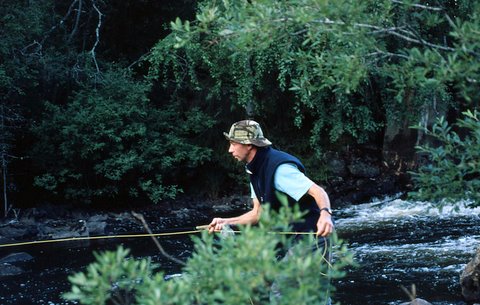
All living
creatures have a relation to eyes. An eye may induce fear but, depending
on situation and circumstance, may also be alluring. During one season,
a group of fly-fishers made an interesting, if not very scientific test.
All were given three types of streamers. One without eyes, one with
painted eyes, and one with eyes made of glass beads. At the end of the
season, they put together a statistic on the amount of fish caught on
each type of streamer. See result below.
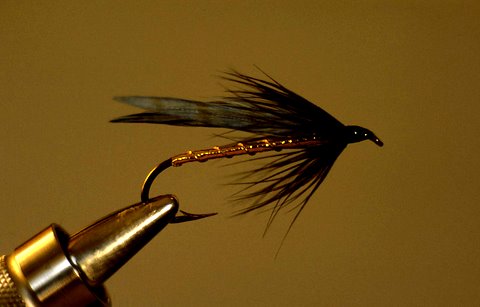
Cross-stream is the usual way to fish a streamer, always staying in
contact with the fly, making sure the curve of the line is not too wide
and letting the fly swing towards the bank. The strike often comes when
the line comes to a halt downstream. In slow current, it might be better
to retrieve the streamer in the ordinary way. And in the test? Well, the
streamer with no eyes came in third.
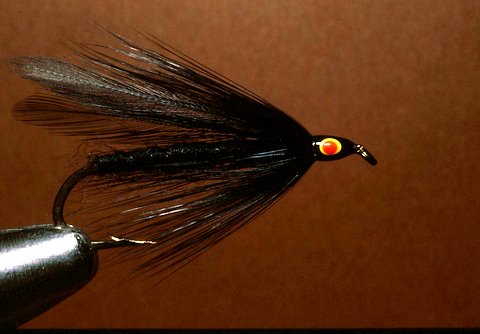
In still
water, “the countdown” method applies, since it gives you an idea at
what depth the fly moves. The moment it hits the water, you slowly count
to three before you start to retrieve, knowing that the streamer is
moving near the surface. At the next cast, you count to five seeking the
fish at a somewhat deeper level, etc. By the way, the streamer with
painted eyes came in second.
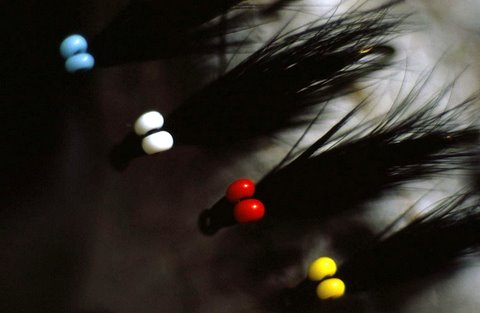
The
streamer with eyes of glassbeads was, according to the statistics, the
best by a certain margin. However, as mentioned before, this experiment
was not particularly scientific. Naturally, the success of a fly is
dependent on many other factors, not least how the fisher handles the
line. Using your fantasy is highly recommended when fishing a streamer.
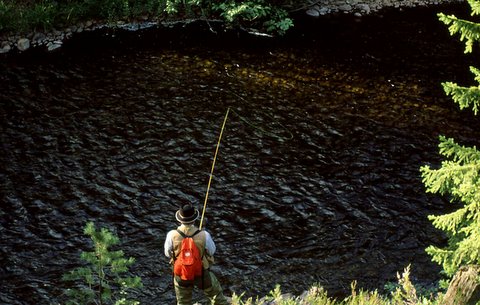
Finally,
many fly fishers, including me, are overall incredibly conservative. On
a special occasion, we have had a good catch on a certain fly, and
stubbornly keep on trusting this particular pattern year after year. If,
by chance, we try a new fly, it is usually on a very hopeless day, when
the fish show no interest in anything at all. The untested pattern
seldom gets a chance to prove its potential when conditions are
favorable.
|
